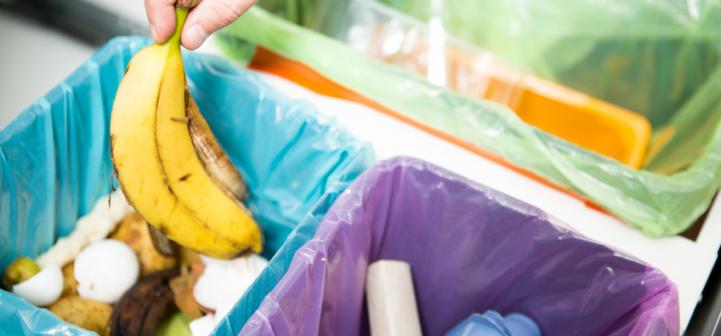
The USDA has recently released a guide called What You Can Do to Prevent Wasted Food to enforce food waste prevention, specifically in schools. The guide reminds us that in the U.S, “food loss and waste is about 30% of the food supply at retail and consumer levels.” Fortunately, the USDA recommends fun, collaborative ways for nutrition professionals, teachers, administrators, parents, and students to tackle this pertinent issue.
The guide initially addresses school nutrition professionals, and markets the USDA’s Food Buying Guide as a resource to aid smart food purchasing decisions and reduce leftover food. Holding taste tests and welcoming student feedback about food acceptability and attractive recipe names are also ways to increase student satisfaction and consumption of school meals. Offering a greater variety of food choices, such as by building a salad or produce bar, can similarly appeal to students; kids are more likely to eat foods that they choose instead of meals they are served from a menu of few options.
In addition, teachers can actively engage their students in learning by taking trips to local food producers or assigning composting projects, thereby teaching them about the impacts of food waste on the environment. Promoting awareness about how these impacts are relevant to children’s lives can make them more cautious when picking foods in the cafeteria.
Likewise, the USDA challenges administrators to assess the amount of time they allot to lunch periods. In the Modifying Eating and Lifestyles at School (MEALS) study, analysis of Boston-area students’ eating habits found that the more time students had to finish their lunches, the more fruits, vegetables, and milk they consumed. Some districts, such as Arundel High School in Annapolis, Maryland have successfully implemented lunch periods as long as fifty minutes, which had required forming a committee of students, parents, and teachers, structuring two, twenty-five minute periods, and shaving no more than eight minutes from morning advisory groups and instructional time. Parents alone can increase eating time by volunteering in cafeterias and helping younger children open food packages, such as milk cartons. Schools can also consider training janitorial staff about properly disposing of food waste and ensuring convenient bin placement in cafeterias for coordinated rounds. And finally, formation of student clubs to generate waste prevention ideas would develop a strong communication network amongst all of these school stakeholders: school administrators, teachers, food service staff, building maintenance and janitorial staff, parents, and the student body.
Chesterbrook Elementary School in McClean, VA, provides a practical example of a community utilizing leftover food. While students learn how to sort waste into recyclables, compost, general trash, and food to be donated, PTA members work with a non-profit organization to deliver the food to a local food pantry. Food waste prevention techniques are in high demand, and simple planning procedures, teamwork, and enthusiasm can ensure enjoyable, effective solutions in all schools.
In addition to the new USDA food waste prevention guide, get more information about school food waste reduction techniques from our other eXtension articles and resources below.
- School Food Recovery Programs – What are they and how do we get started?
- Schools Reduce Food Waste through Improved Front and Back of the House Techniques
- Decreasing Waste in Schools: Food Recycling Options
Contributors
Allison Milch, Cornell University
Alisha Gaines, PhD, Cornell University, Division of Nutrition Sciences
Sources
(2014) Creative Solutions to Ending School Food Waste. Food and Nutrition Service, USDA
(2016) Food Buying Guide for School Meal Programs. Food and Nutrition Service, USDA
(2016) What You Can Do To Help Prevent Wasted Food. Food and Nutrition Service, USDA
Calepa. Case Study: Food Waste Diversion in CalEPA Headquarters BACKGROUND. Case Study: Food Waste Diversion in CalEPA Headquarters
Gustafson, Sara (2016). Measuring food loss and waste. International Food Policy Research Institute.
Kaplan, Karen (2015) In School Cafeterias, a Longer Lunch Is a More Healthful Lunch, Study Says. Los Angeles Times.
Key facts on food loss and waste you should know! Food and Agriculture Organization of the United Nations.
Susan Gvozdas (2008) Longer Lunch, More Options. The Baltimore Sun.
